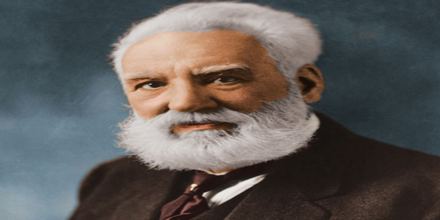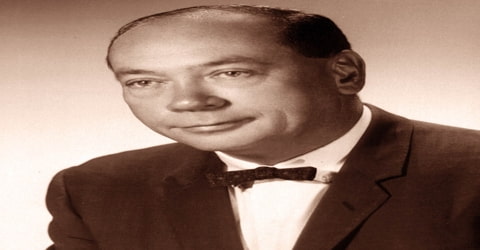Alexander Graham Bell – Scientist, Inventor, Engineer (1847-1922)
Full Name: Alexander Graham Bell
Date of Birth: March 3, 1847
Place of Birth: Edinburgh, Scotland
Date of Death: August 2, 1922 (aged 75)
Place of Death: Beinn Bhreagh, Nova Scotia, Canada
Cause of Death: Complications from diabetes
Residence: United Kingdom, Canada, United States
Occupation: Inventor, Scientist, Engineer, Professor and Teacher of the deaf
Spouse(s): Mabel Hubbard (m. 1877–1922)
Children: Four children
Parent(s): Alexander Melville Bell
Eliza Grace Symonds Bell
 (Alexander Graham Bell)
(Alexander Graham Bell)
Early Life
Alexander Graham Bell was born on March 3, 1847, in Edinburgh, Scotland. He was a Scottish-born American inventor, scientist, and teacher of the deaf whose foremost accomplishments were the invention of the telephone (1876) and the refinement of the phonograph (1886).
His research on hearing and speech further led him to experiment with hearing devices which eventually culminated in Bell being awarded the first U.S. patent for the telephone in 1876.
Bell considered his most famous invention an intrusion on his real work as a scientist and refused to have a telephone in his study.
Many other inventions marked Bell’s later life, including groundbreaking work in optical telecommunications, hydrofoils and aeronautics. Although Bell was not one of the 33 founders of the National Geographic Society, he had a strong influence on the magazine while serving as the second president from January 7, 1898, until 1903.
Bell worked with Thomas Watson on the design and patent of the first practical telephone. In all, Bell held 18 patents in his name alone and 12 that he shared with collaborators.
His father, Alexander Melville Bell, was an expert on the mechanics of the voice and on elocution (the art of public speaking). His grandfather, Alexander Bell, was an elocution professor. Bell’s mother, Eliza, was hard of hearing but became an accomplished pianist (as well as a painter), and Bell took an interest in music. Eliza taught Alexander, who was the middle of three brothers, until he was ten years old. When he was a youth he took a challenge from a mill operator and created a machine that removed the husks from grain. He would later call it his first invention.
Bell’s father, grandfather, and brother had all been associated with work on elocution and speech, and both his mother and wife were deaf, profoundly influencing Bell’s life’s work.
He died on August 2, 1922, in Cape Breton Island, Nova Scotia, Canada.
Childhood and Educational Career
Alexander Bell was born in Edinburgh, Scotland, on March 3, 1847. The family home was at 16 South Charlotte Street, and has a stone inscription marking it as Alexander Graham Bell’s birthplace. He had two brothers: Melville James Bell (1845–70) and Edward Charles Bell (1848–67), both of whom would die of tuberculosis. His father was Professor Alexander Melville Bell, a phonetician, and his mother was Eliza Grace (née Symonds). He was named for his paternal grandfather. The middle name “Graham” was added when he was 10 years old. To close relatives and friends he remained “Aleck”.
During his youth, Alexander Graham Bell experienced strong influences that had a profound effect on his later life. Bell’s hometown of Edinburgh, Scotland, was known as the “Athens of the North,” for its rich culture of arts and science. His grandfather and father were experts on the mechanics of voice and elocution. Alexander’s mother, who was nearly deaf, became an accomplished pianist and inspired him to undertake big challenges.
As a child, young Bell displayed a natural curiosity about his world, resulting in gathering botanical specimens as well as experimenting even at an early age. At the age of 12, Bell built a homemade device that combined rotating paddles with sets of nail brushes, creating a simple dehusking machine that was put into operation and used steadily for a number of years.

From his early years, Bell showed a sensitive nature and a talent for art, poetry, and music that was encouraged by his mother. With no formal training, he mastered the piano and became the family’s pianist. Despite being normally quiet and introspective, he reveled in mimicry and “voice tricks” akin to ventriloquism that continually entertained family guests during their occasional visits. Bell was also deeply affected by his mother’s gradual deafness (she began to lose her hearing when he was 12), and learned a manual finger language so he could sit at her side and tap out silently the conversations swirling around the family parlour.
He also developed a technique of speaking in clear, modulated tones directly into his mother’s forehead wherein she would hear him with reasonable clarity. Bell’s preoccupation with his mother’s deafness led him to study acoustics.
His father taught elocution to the deaf and had developed what was called the ‘Visible Speech’ system to help deaf children learn to speak. He received most of his early education from his mother who was an unusually gifted painter and pianist, despite her deafness.
Throughout his childhood, he spent short periods of time in traditional educational institutions including Edinburgh’s Royal High School, which he left at the age of 15.
He initially attended University of Edinburgh and then the University College, London, England, but did not receive a formal education comparable to his peers in Victorian Britain.
Working Career
In 1871, Alexander Graham Bell moved to Boston and began work on a device that would allow for the telegraph transmission of several messages set to different frequencies. He found financial backing through local investors Thomas Sanders and Gardiner Hubbard.
Between 1873 and 1874, Bell spent long days and nights trying to perfect the harmonic telegraph. During his experiments, he became interested in another idea, transmitting the human voice over wires. The diversion frustrated Bell’s benefactors and Thomas Watson, a skilled electrician, was hired to refocus Bell on the harmonic telegraph. But Watson soon became enamored with Bell’s idea of voice transmission and the two created a great partnership with Bell being the idea man and Watson having the expertise to bring Bell’s ideas to reality.
On March 10, 1876, he produced the first intelligible telephone call, when he summoned his assistant, with words that Bell transcribed in his lab notes as “Mr. Watson—come here—I want to see you”. Watson heard his voice through the wire and thus received the first telephone call.
 (Alexander Graham Bell’s telephone patent drawing, March 7, 1876)
(Alexander Graham Bell’s telephone patent drawing, March 7, 1876)
A legal battle ensued with inventor Elisha Gray who claimed his invention of the telephone predated Bell’s; the U.S. Supreme Court ruled in Bell’s favor and subsequently ‘Bell Telephone Company’ was formed in 1877.
Over the next 18 years, the Bell Company faced over 550 court challenges, including several that went to the Supreme Court, but none were successful. Even during the patent battles, the company grew. Between 1877, and 1886, over 150,000 people in the U.S. owned telephones.
Improvements were made on the device including the addition of a microphone, invented by Thomas Edison, which eliminated the need to shout into the telephone to be heard.
By 1883, he created the technology for the Graphophone and other early sound recording equipment, including a magnetic recording technology that was an early form of tape recording.
Towards the end of the 19th century his interests began to move away from sound transmission and recording to transport technologies. He developed a passion for air travel and helped to establish the Aerial Experiment Association in 1907.
From 1906 to 1919, he also worked on boating inventions that would lead to the development of the hydrofoil craft.
Traveling to Boston in April 1871, Bell proved successful in training the school’s instructors. He was subsequently asked to repeat the program at the American Asylum for Deaf-mutes in Hartford, Connecticut, and the Clarke School for the Deaf in Northampton, Massachusetts.
Teaching his father’s system, in October 1872, Alexander Bell opened his “School of Vocal Physiology and Mechanics of Speech” in Boston, which attracted a large number of deaf pupils, with his first class numbering 30 students. While he was working as a private tutor, one of his most famous pupils was Helen Keller, who came to him as a young child unable to see, hear, or speak. She was later to say that Bell dedicated his life to the penetration of that “inhuman silence which separates and estranges”. In 1893, Keller performed the sod-breaking ceremony for the construction of the new Bell’s new Volta Bureau, dedicated to “the increase and diffusion of knowledge relating to the deaf”.
In 1880, he established the Volta Laboratory, an experimental facility devoted to scientific discovery.
Bell is also credited with developing one of the early versions of a metal detector in 1881.
In the remaining years of his life Bell worked on a number of projects. He devoted a lot of time to exploring flight, starting with the tetrahedral kite in 1890s. In 1907, Bell formed the Aerial Experiment Association with Glenn Curtiss and several other associates. The group developed several flying machines, including the Silver Dart. The Silver Dart was the first powered machine flown in Canada. He later worked on hydrofoils and set a world record for speed for this type of boat.
He is most famous for his pioneering work on the development of the telephone. He worked with Thomas Watson, his assistant, on the design and patent of the first practical telephone.
Many other inventions marked his later life including the refinement of the phonograph. His other exceptional works were in the field of hydrofoils and aeronautics. In all, he held 18 patents in his name alone and 12 that he shared with collaborators.
He was one of the founders of the National Geographic Society in 1888 and served as its president from 1896 to 1904.
In January 1915, Bell was invited to make the first transcontinental phone call. From New York, he spoke with his former associate Thomas Watson in San Francisco.
 (Bell at the opening of the long-distance line from New York to Chicago in 1892)
(Bell at the opening of the long-distance line from New York to Chicago in 1892)
On October 9, 1876, Alexander Graham Bell and Thomas A. Watson talked by telephone to each other over a two-mile wire stretched between Cambridge and Boston. It was the first wire conversation ever held. Yesterday afternoon (on January 25, 1915) the same two men talked by telephone to each other over a 3,400-mile wire between New York and San Francisco. Dr. Bell, the veteran inventor of the telephone, was in New York, and Mr. Watson, his former associate, was on the other side of the continent.
Personal Life
Alexander Graham Bell was born on March 3, 1847, in Edinburgh, Scotland, to Prof. Alexander Melville Bell and his wife Eliza Grace Symonds. He had two brothers—Melville James Bell and Edward Charles Bell—both of whom died of tuberculosis.
For his 11th birthday, his father acquiesced and allowed him to adopt the name “Graham”, chosen out of respect for Alexander Graham, a Canadian being treated by his father who had become a family friend. To close relatives and friends he remained “Aleck”.
In 1870, after the death of two of his brothers, the Bell family moved to Canada for the sake of his health. Expanding on his father’s work of teaching deaf people to communicate, he began working on transmitting telephonic messages.

On July 11, 1877, Bell married Mabel Hubbard (1857–1923) at the Hubbard estate in Cambridge, Massachusetts. They had four children:
Elsie May Bell (1878–1964) who married Gilbert Hovey Grosvenor of National Geographic fame.
Marian Hubbard Bell (1880–1962) who was referred to as “Daisy”. Married David Fairchild.
Two sons who died in infancy (Edward in 1881 and Robert in 1883).
From 1912 until 1918 he was the chairman of the board of scientific advisers to the Eugenics Record Office associated with Cold Spring Harbor Laboratory in New York, and regularly attended meetings. In 1921, he was the honorary president of the Second International Congress of Eugenics held under the auspices of the American Museum of Natural History in New York. Organizations such as these advocated passing laws (with success in some states) that established the compulsory sterilization of people deemed to be, as Bell called them, a “defective variety of the human race”. By the late 1930s, about half the states in the U.S. had eugenics laws, and California’s compulsory sterilization law was used as a model for that of Nazi Germany.
Death
He died on August 2, 1922 at his private estate, Beinn Bhreagh, Nova Scotia, Canada due to complications from diabetics. On his funeral, every phone on the continent of North America was silenced in his honor for one minute.

Dr. Alexander Graham Bell was buried atop Beinn Bhreagh mountain, on his estate where he had resided increasingly for the last 35 years of his life, overlooking Bras d’Or Lake. He was survived by his wife Mabel, his two daughters, Elsie May and Marian, and nine of his grandchildren.
Honours
In 1880, Bell received the Volta Prize with a purse of 50,000 francs for the invention of the telephone from the Académiefrançaise, representing the French government.
He received the Légion d’honneur (Legion of Honor) from the French government in 1881.
In 1902, The Society of Arts of London, England, awarded him the Albert Medal for his invention of the telephone.
 (Bell, an alumnus of the University of Edinburgh, Scotland, receiving an honorary Doctor of Laws degree (LL.D.) at the university in 1906)
(Bell, an alumnus of the University of Edinburgh, Scotland, receiving an honorary Doctor of Laws degree (LL.D.) at the university in 1906)
In 1912, The Franklin Institute awarded him the Elliott Cresson Medal in the field of Engineering for “Electrical Transmission of Articulate Speech”.
He was awarded the AIEE’s Edison Medal in 1914 “For meritorious achievement in the invention of the telephone”.
He also received at least a dozen honorary degrees from numerous academic institutions, including eight honorary LL.D.s (Doctorate of Laws), two PhD, a D.Sc. and an M.D.
Alexander Graham Bell was ranked 57th among the 100 Greatest Britons (2002) in an official BBC nationwide poll, and among the Top Ten Greatest Canadians (2004), and the 100 Greatest Americans (2005).
In 2006 Bell was also named as one of the 10 greatest Scottish scientists in history after having been listed in the National Library of Scotland’s ‘Scottish Science Hall of Fame’.
















